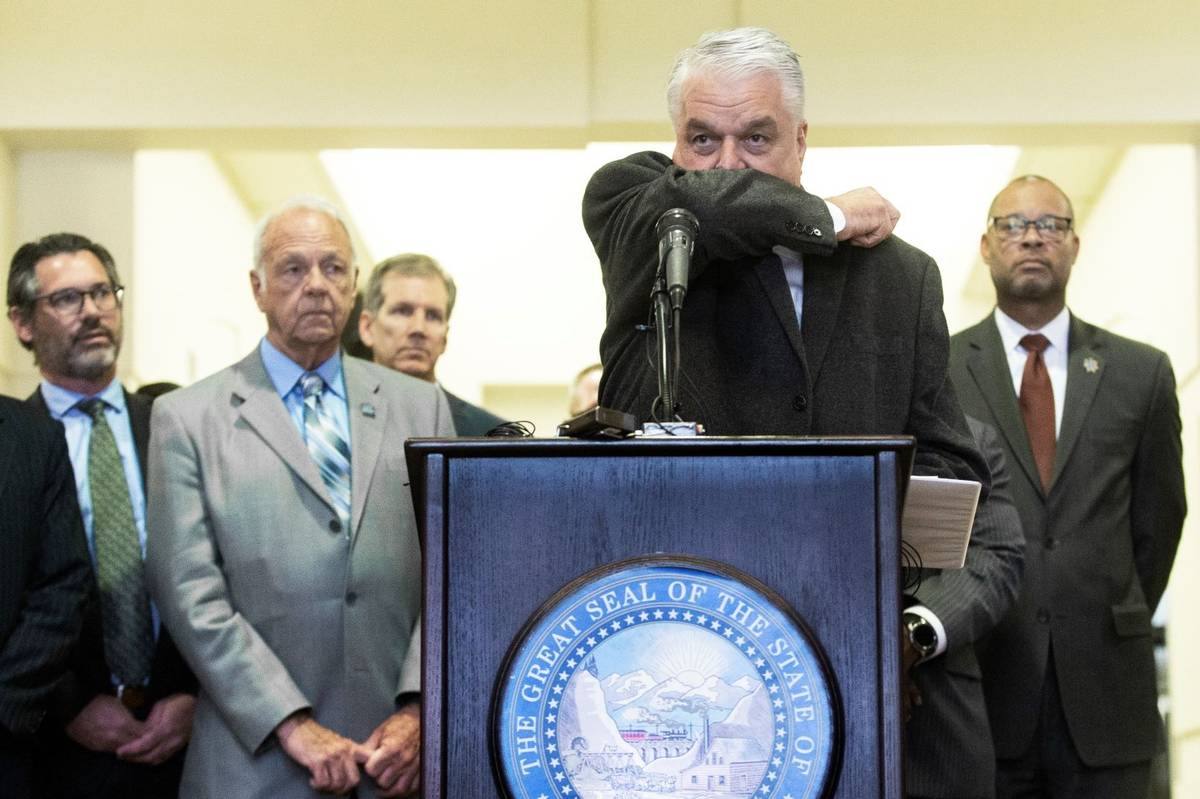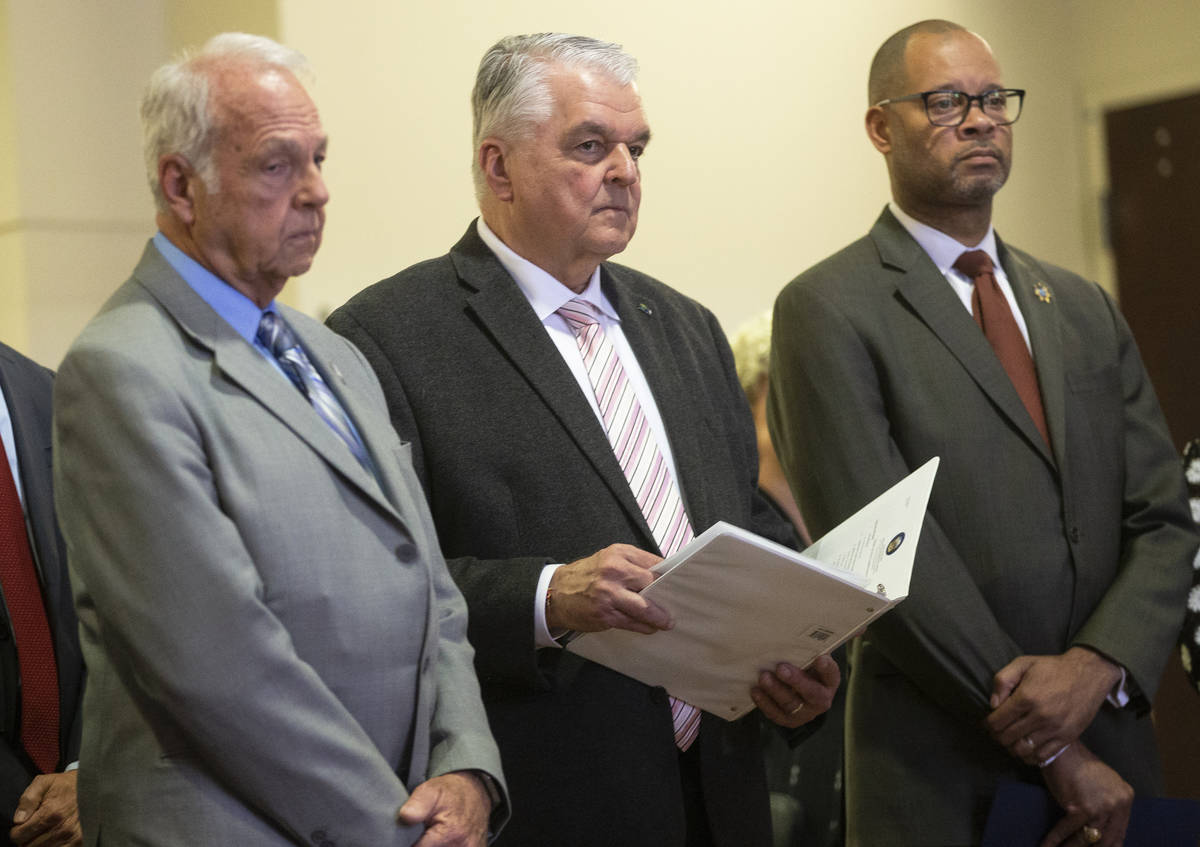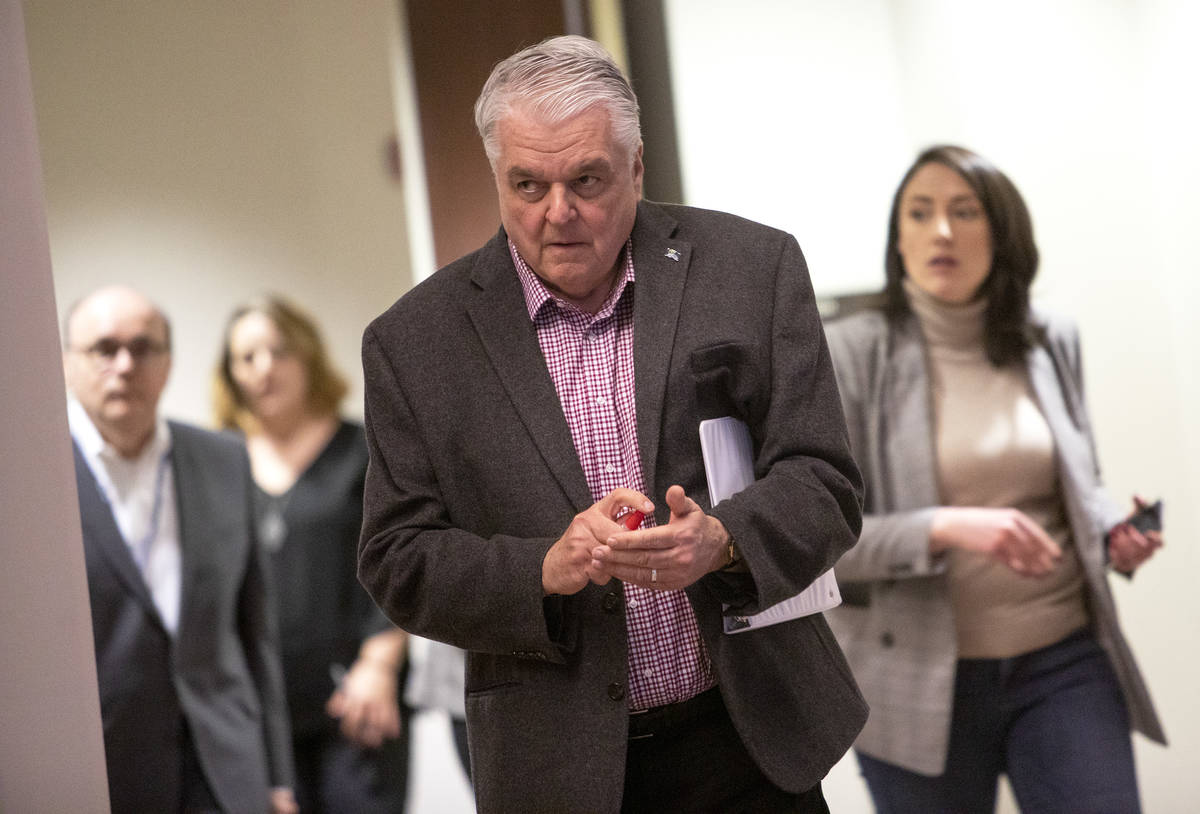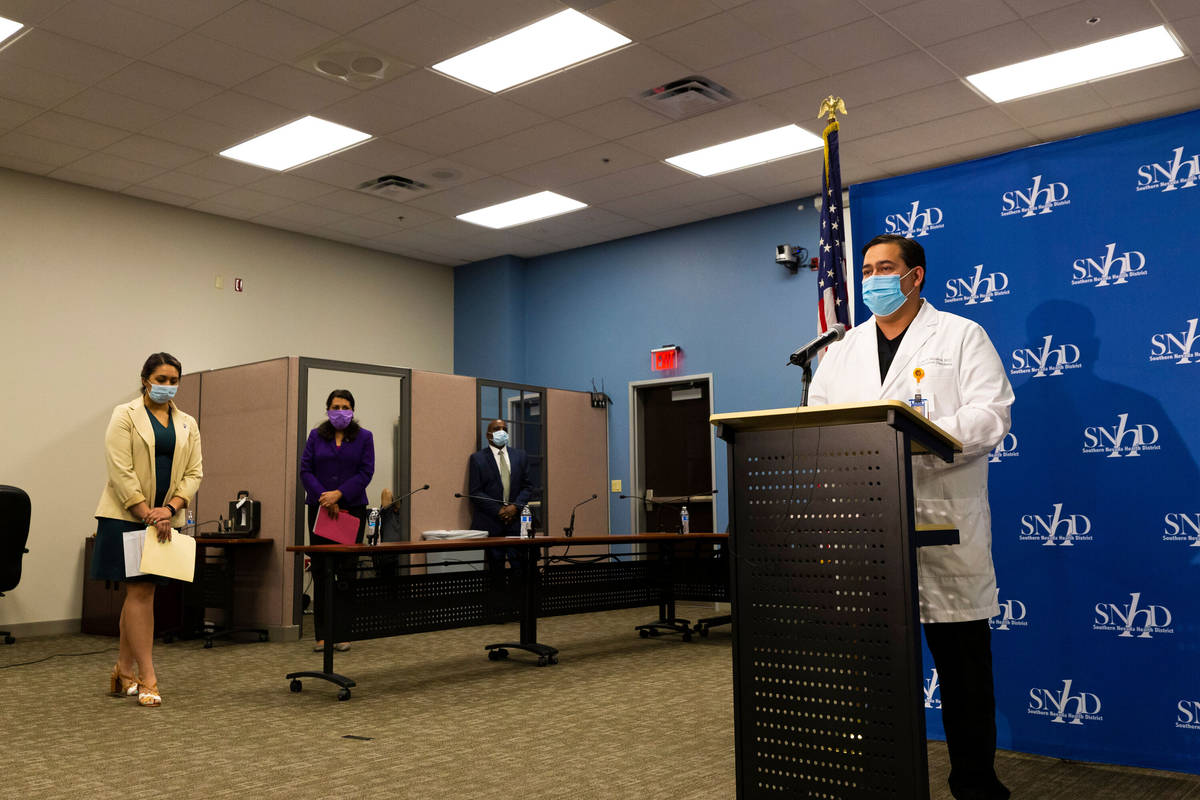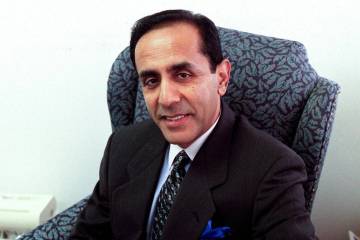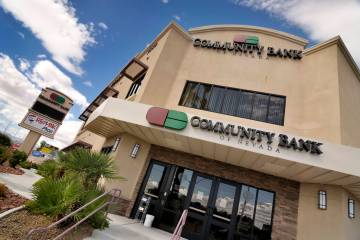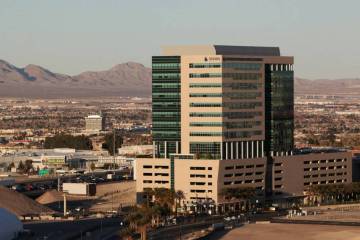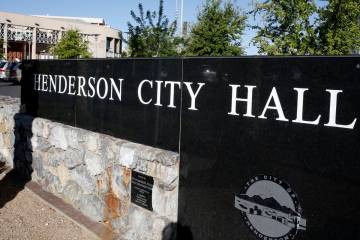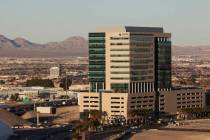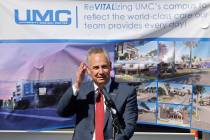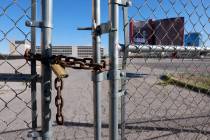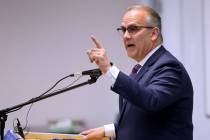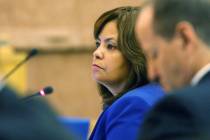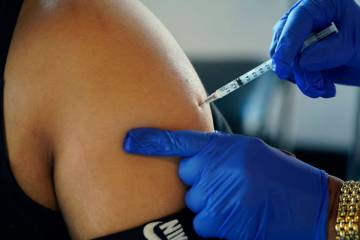COVID demanded transparency. Has Nevada delivered?
Even before Nevada reported its first COVID-19 case, Gov. Steve Sisolak publicly promised the state’s pandemic response would be transparent.
“Communication, knowledge and transparency are key in this evolving situation,” he wrote in a statement following a Feb. 28, 2020, news conference. “And we will be working diligently to ensure that accurate and relevant information continues to be shared with the public.”
Over the year, health officials say, they faced a huge undertaking to quickly build response teams, implement safety measures and keep the public abreast of their evolving strategy. Nevada, like all other states, was not prepared for a long-lasting pandemic.
With limited resources, officials have held hundreds of virtual news conferences, maintained a comprehensive online COVID-19 dashboard and launched education campaigns.
But there have also been shortcomings to Sisolak’s promise, transparency advocates say.
Government employees have required constant reminders to arrange interviews and answer questions outside of news conferences. Reporters have waited months to receive public records, some of which officials fought to keep hidden. On multiple occasions, state and local health officials have simultaneously pointed to each other to answer the same questions.
COVID-19 has transformed government transparency into “a kitchen table issue for families all across America,” said Frank LoMonte, director of the Brechner Center for Freedom of Information at the University of Florida.
“Families have come to recognize that they desperately need reliable information from the government to make health and safety decisions,” he said.
In an interview this month, Sisolak said officials’ primary focus had been fighting an unprecedented pandemic. He maintained his administration had kept the public informed.
“I think we’ve been as transparent as possibly could happen,” he said. “We provide the information as accurately as possible and as quickly as possible.”
But LoMonte said there were obvious instances where Nevada’s government could have been more transparent in the past year, after reviewing obstacles faced by the Review-Journal in gathering pandemic-related data and documents from officials.
One glaring example, he said, was Sisolak’s office taking more than seven months to produce copies of the governor’s work calendars from March.
“It is a very popular platitude to say I will be transparent with the public,” LoMonte said. “But the proof is in your behavior.”
Long waits for records
Reporters seeking records from state officials have faced long wait times throughout the pandemic.
Department of Health and Human Services officials responding to Review-Journal record requests have on at least eight occasions stated they needed “eight to 10 weeks or longer” to gather and provide the documents “or give you a reasonable time frame of when a response can be made to your request.”
The reason, according to nearly identically worded responses, is because officials are “currently expending every available resource on the COVID-19 pandemic.”
The pattern began in April 2020 and has continued through at least February. Delays have been applied to requests such as officials’ emails, vaccination data and reports on hospital capacity.
In one instance, officials said in late January it would take two months to produce aggregate data on vaccine recipients’ ZIP codes of residence. The same information was provided to officials less than a week later in an internal document titled “weekly update,” according to a copy obtained by the Review-Journal.
In an emailed statement Friday, DHHS spokeswoman Shannon Litz wrote the department had completed more than 80 public record requests in the past year related to the pandemic. By comparison, they received only about a dozen record requests in 2019.
While the department considered providing records a “priority,” she wrote, completing many requests required input from staff whose primary focus was responding to the outbreak.
“This process is time consuming and challenging, requiring in-depth, accurate email searches, review of documents and redactions, and as more requests were received the timeline to complete the requests had to be modified to match the resources available,” Litz said.
Nevada Press Association Executive Director Richard Karpel said the blanket response may have made sense last spring, when government workers were adapting to working at home. However, he said it has lost legitimacy over time.
“I think we all have sympathy for people trying to lead and do things during an important crisis like the pandemic we faced,” he said. “On the other hand, we’ve all found ways to deal with it.”
State law gives government agencies five business days to complete a public records request, deny the request or notify the requestor that more time is needed to gather the records.
While state officials’s blanket response may follow the letter of the law, Karpel and LoMonte both said it upends the law’s spirit of getting information out quickly.
In a fast-evolving crisis like the pandemic, the public’s focus and interest shifts in a matter of weeks, if not days, LoMonte said.
By the time reporters can expect to receive records, the most pressing issues will have likely changed, LoMonte said. That ultimately leads to fewer requests being filed, whether intended or not.
“The chilling effect of having a dysfunctional system means that the public is missing out on well-documented news stories,” he said. “I would argue that during a pandemic, is the time to double down on transparency and to make your turnaround time faster than ever.”
Blocking access to records
Government officials have also attempted to block access to some public records.
Last summer, Nevada had not publicly identified any suspected superspreading events or case clusters, beyond outbreaks at nursing homes and other state-licensed facilities. The silence came as leaders said they had taken a targeted, data-driven approach to curbing COVID-19.
Facing pressure to divulge more, Sisolak said in August he feared businesses would be harmed by “half information” but would consider releasing information on “particularly egregious” establishment. The promise never came to fruition.
“Leaders need to be able to trust the people they lead to use information in a way that is helpful to them,” Karpel said. “By not releasing that information, they were denying us as citizens the ability to do that.”
The Review-Journal requested copies of the state’s weekly analyses on possible COVID-19 exposure locations.
State officials spent weeks fighting the release the records, claiming at one point they were part of an ongoing investigation “related to all cases or suspected cases of COVID-19” and contained confidential patient information.
“That’s not an isolated Nevada problem at all,” LoMonte said. “Probably the single greatest recurring (COVID-19) transparency issue has been the misinterpretation of privacy law for purposes of concealing trends and statistics.”
The newspaper got the reports in mid-September. They contained no information that would identify patients, but they did show that Strip casino-hotels constituted the largest share of possible exposure locations in Las Vegas.
State and local officials stopped compiling the reports after the Review-Journal published their contents.
This February, the Southern Nevada Health District began regularly publishing data on the most common types of possible exposure sites on its website. Agency health officer Dr. Fermin Leguen said the decision was made due to demand from the news media and the public.
Keeping records secret
In another instance, state and local health officials delayed releasing records that a hospital lobbying group wanted to keep hidden.
Early in the pandemic, the Review-Journal requested government agencies produce reports showing individual hospitals’ patient loads, staffing levels and inventories of personal protective equipment. The Nevada Hospital Association was providing the information to state and local health officials daily but would not share it with the public.
The governor’s office estimated it would take two months to gather 11 days’ reports. The Southern Nevada Health District stalled in producing them because the hospital association created them.
More than a month later, the Washoe County Health District became the first agency to turn over the records. A spokesman for the agency said the hospital association had threatened to rescind access to any agency that provided the records to the public or media.
April’s reports showed most local acute care hospitals had not yet come close to being overwhelmed. But during the pandemic’s height in December, new hospital association reports obtained by the Review-Journal showed many local hospitals were facing full intensive-care units and staffing shortages.
Karpel said the records’ release helped Nevadans grasp the burden on the state’s health care system. Without the information, it would be easier for conspiracy theories to flourish.
“If you don’t give them the information, (people) will fill it in with their own story,” Karpel said.
In a year marked not only by a pandemic, but also unsubstantiated claims of widespread voter fraud and protests against police brutality, LoMonte said the most appropriate response from officials nationwide would be to become more transparent about how government works.
“If we’re looking for a laboratory Petri dish of what government secrecy produces, we only have to look back at 2020,” he said. “What it produces is a climate of rumor and disinformation and distrust.”
Contact Michael Scott Davidson at sdavidson@reviewjournal.com or 702-477-3861. Follow @davidsonlvrj on Twitter. Review-Journal staff writer Arthur Kane contributed to this report.



